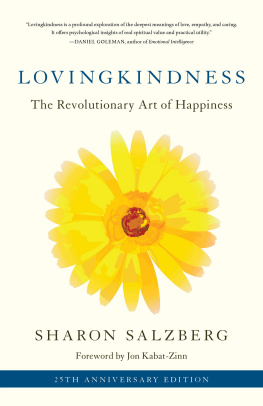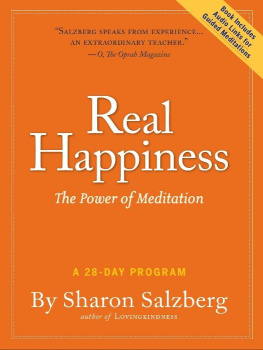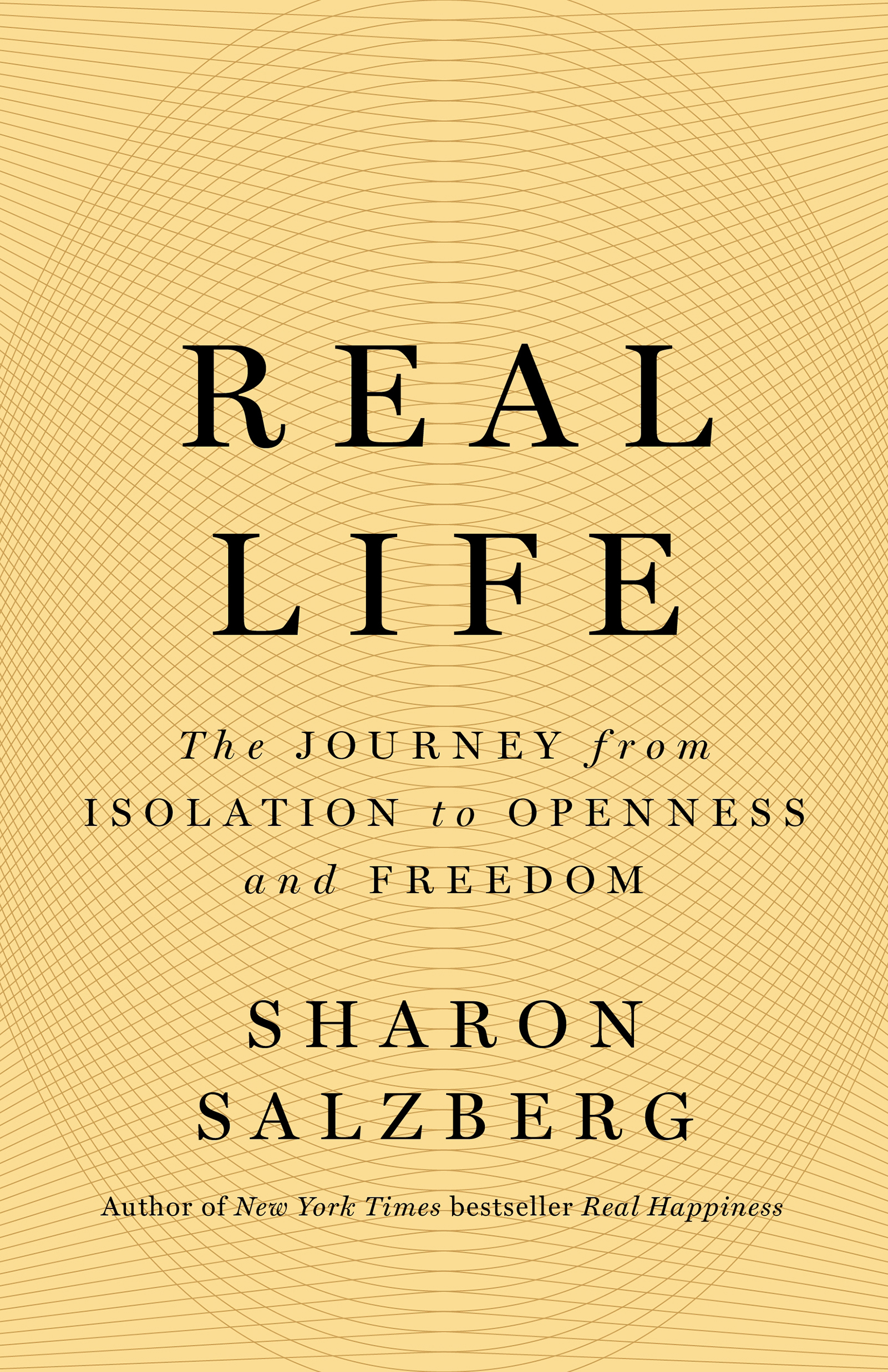Contents
Guide
Pagebreaks of the print version

The author and publisher have provided this e-book to you for your personal use only. You may not make this e-book publicly available in any way. Copyright infringement is against the law. If you believe the copy of this e-book you are reading infringes on the authors copyright, please notify the publisher at: us.macmillanusa.com/piracy.
To all who journey toward freedom
yesterday, today, and tomorrow
T HERE ARE TIMES and I suspect I speak for most of us when I say thiswhen we feel like were merely bystanders to our own lives. There are times when we feel mired in habit, withdrawn and small. Even though we want to take a stand about something we care about we want to reach out to someone in need we want to go up to someone and thank them for their work, we are nonetheless suddenly seized by the conviction that our words or our actions couldnt possibly be meaningful, that we dont count as much as others do, that we should just shrink back and dwell in the long-occupied, constraining box we are accustomed toso familiar, even if cramped and confining.
At the same time, we can also recognize those moments when even baby steps into new terrain are exciting, perhaps a little wobbly but also audacious, where we connect to something bigger than our fears and feel we are living more fully, learning and growing and having an adventure. When our trying new approaches or different behaviors does not feel destined to an imminent, sputtering end because of our belief that were fundamentally limited.
Instead, possibilities abound.
Perhaps our early conditioning has trained us to imagine that very little happiness is available to us. An oppressive personal or cultural atmosphere might work to depict our right to joy as negligible, our room to move as awfully limited. A path to liberation counteracts this conditioning and culturally reinforced constriction. To accomplish such a transformation, it asks us to go forward into the full range of our feelings and reactions with kindness and honesty. When we do so, we realize that we can travel from painful constriction to expansion and freedom.
This is not a one-and-done journey. Its something we repeat again and again, not because of compulsion or obligation but because we are fueled by the happiness of discovery, by the relief of openness, and by realizing with joy the breadth and depth of what we might well be capable of.
This is what Im calling Real Life. Real Life is about what happens when we fully engage with our everyday lives, whatever shape our lives take, whatever challenges and obstacles that life may bring.
Psychologist Carol Dweck, in her book Mindset: The New Psychology of Success, talks about a mindset as a set of beliefs that shapes how we make sense of the world and ourselves. These beliefs influence how we think, how we feel, and how we behave.
She describes a fixed mindset in this way:
In a fixed mindset, people believe their basic qualities, like their intelligence or talent, are simply fixed traits. They spend their time documenting their intelligence or talent instead of developing them Ive seen so many people with this one consuming goal of proving themselvesin the classroom, in their careers, and in their relationships. Every situation calls for a confirmation of their intelligence, personality, or character. Every situation is evaluated: Will I succeed or fail? Will I look smart or dumb? Will I be accepted or rejected? Will I feel like a winner or a loser?
She describes the growth mindset as this:
Theres another mindset in which these traits are not simply a hand youre dealt and have to live with, always trying to convince yourself and others that you have a royal flush when youre secretly worried its a pair of tens. In this mindset, the hand youre dealt is just the starting point for development. This growth mindset is based on the belief that your basic qualities are things you can cultivate through your efforts.
In other words, if we want our lives to look different from the way they do, be more fulfilling, more authentic, less fixed and restricted, we have to believe in movement, in change, and in the possibility of development. If we think these serve no purpose, were simply stuck.
The Passover Seder, seen symbolically, provides a powerful metaphor for the journey to real life. It begins in the recognition of suffering and oppression, but instead of being defined by it, we engage it, and together, we find inspiration, and ultimately, aspiration for a better world. Its a ritual we repeat to renew our energy to go forward into life, rather than shrink away. We journey from confinement to freedom, from humiliation to dignity.
At the same time, the narrative framework Im most familiar with for examining lifes suffering and our chance for relief from suffering comes from the Buddhas teaching. Because it doesnt require adherence to a belief system, doesnt ask for loyalty, celebrates questioning, and invites ones own direct experience, Ive always considered it more a psychological system than anything else. I refer to this framework a lot in this book because, for my entire adult life, I have found the perspective of Buddhist psychology immensely helpful in my effort to disentangle from painful habits, journey into the unknown with greater well-being, and nurture happiness and an experience of community. It has helped me have a sense of doing my best to live my life every day according to my deepest values.
An earlier book I wrote, Real Love, was about just that, love. Real Change was about systemic change, with an emphasis on linking inner change to change in the world. Real Life is about the inner journeyand journeyswe make when we decide to fully live life, whatever the world has presented to us, knowing that life is short and also that life is sacred.
We explore the journey to expansive freedom through working with tools like mindful awareness, friendship, and the fostering of a greater sense of meaning in everyday life. These manifest in our lives as taking risks with what we dare to imagine, taking an interest in internal states we normally try to avoid, and taking an interest in people we normally try to avoidas well as appreciation, accountability, and redefining community.
From a distance, or with a merely superficial look, a journey like this can seem just too formidable, with lots of pressure and impossible standards to live up to. Up close, actually pursuing it, making it real, it is a fantastic adventure. Most beautifully, it is an adventure that we get to have together.
W HEN I WAS NINE, my mother died, so during a chunk of my chaotic childhood, I lived with my paternal grandparentsimmigrants from Poland, observant Jews. Most of the practices of the household, like not turning on the lights on Saturday, the Sabbath, I simply followed with little interest or curiosity about any possible deeper meaning. Following along suited my general sense of numbness anyway. The Passover Seder, however, was a big exception.
I didnt have a tremendous understanding of the layers of the Seders symbolism or valuesbut I felt a lot. I felt a stirring of joy at the coming together of family (even if my family didnt look like the conventional picture I had in my head from TV), the tribal recognition of collective suffering (which painted a picture of a life I could actually feel I belonged within), the idea that life could be different, could be better, and that no matter how hard things were, you could imagine you were on your way to that better life.









